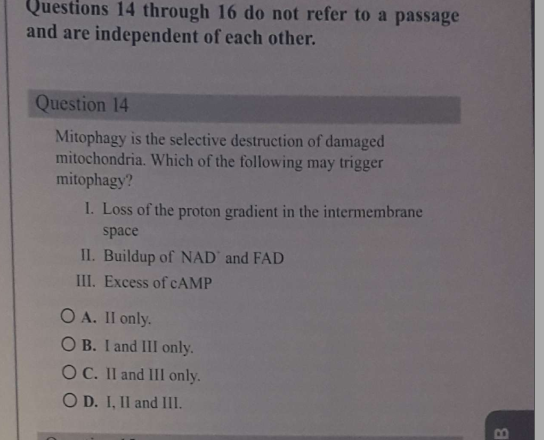So, EK actually says cAMP is made when ATP levels are low. Which is not ringing home!! Don't you need ATP to make CAMP? or doesnt Adenyl Cyclase convert ATP to CAMP? if so wouldnt a decrease in ATP decrease CAMP level as well?

image hosting

image hosting
Is it a mistake from their part? because it's not making sense to me
@aldol16

image hosting

image hosting
Is it a mistake from their part? because it's not making sense to me
@aldol16
Last edited:
